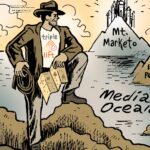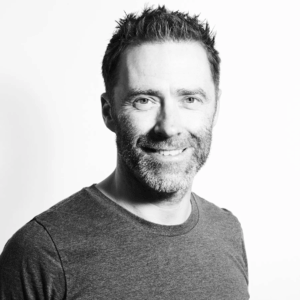The new WPP, as CEO Mark Read called it during a Tuesday morning investor call in London, will return to organic growth by reducing headcount by about 2.5%, consolidating agencies and investing strategically in technology.
WPP expects to deliver annual savings of $346 million by the end of 2021 thanks to this strategy. Restructuring costs will total roughly $377 million.
Consolidation
WPP will shed legacy assets and consolidate its most storied agencies.
WPP has already begun this journey, merging VML and Young & Rubicam in September to create VMLY&R, and Wunderman and J. Walter Thompson in November to launch Wunderman Thompson. In addition to absorbing its healthcare group into other agencies, this represents 23% of the group’s revenue. And WPP expects a transaction to close in Q2 2019 on Kantar, from which it said on its Q3 earnings call it will divest its majority stake.
So far, WPP has disposed of 16 non-core assets and saved $886 million – but there’s more to do, Read said.
“We need to have that balance between revenue and cost reduction,” Read said.
Read hopes that having fewer companies and investing in regional development will help clients easily access resources across WPP. That will involve bringing creative and media closer together and creating a common tech stack so agencies can share data.
“[Clients won’t have] to cross organizational silos for integration,” Read said. “They get everything they need from fewer and smaller companies.”
Consolidation will also improve morale at agencies in more “traditional” sectors like creative, where WPP will invest in talent and new ways to create content at scale.
WPP hopes to make its people excited about a career at WPP rather than one of its individual agencies. The company will rethink its rewards and incentive structures to drive collaboration.
But before that happens, Read acknowledged impending layoffs: “There will be job losses from bringing companies together, unfortunately, but we think it’s necessary to do. We have to make tough choices.”
Technology
While WPP is known for investing in technology, Read wants to make those investments smarter and more strategic. That will require building a common tech and data stack across WPP and removing its 6,000 technology specialists from silos across the group. It will also mean working more closely with client CIOs.
“Simplifying our structure and having a common technology approach should allow us to unleash its power,” Read said. “It’s no longer enough to just work with the CMO.”
WPP, which currently spends $5.5 billion with Google and $2.5 billion with Facebook, wants to stop calling these companies “Frenemies,” as former CEO Martin Sorrell did, and treat them as partners and clients. That will require WPP to focus on integrating technologies rather than trying to compete with tech giants.
“We can’t compete, sadly, against Google and Adobe on building technology,” Read said. “But we can integrate their systems to give us what we need.”
Rather than trying to own data, WPP will try to use it to create better results for clients.
“Data is critical to us,” Read said, “but it should focus in the future not whether we own it, but how we use it. It’s clear that scale has moved from buying power to the power of intelligence, and the heart of that is data.”
Creative transformation + commerce
While technology will be WPP’s growth engine, creative will be its strategic differentiator. The company will invest roughly $19 million in creative leadership annually over the next three years with a particular focus on the United States, where it’s been “under the greatest pressure,” Read said.
“We want WPP to be known as a creative transformation company,” he said. “Content creation and new forms of creativity [will] apply traditional creative skills with an understanding of new channels.”
The new WPP will use AI and data to power personalized messaging. And Read sees merging offline and online experiences as a $100 billion opportunity, that can provide 5% to 10% growth.
And as for commerce, which is where all growth is coming from in retail channels, WPP will bring sales and marketing expertise closer together to help clients win on platforms like Amazon.
“Today, every company is an ecommerce company,” Read said.















